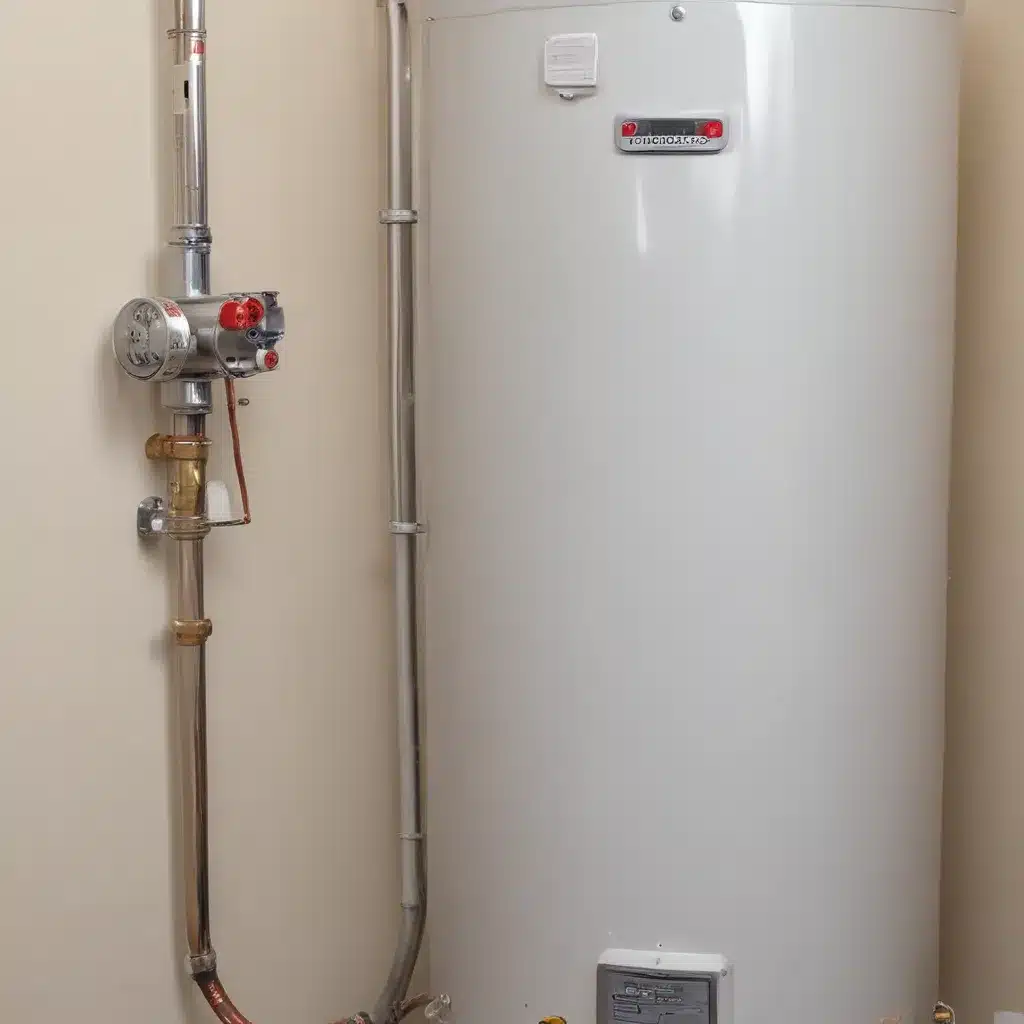
As an experienced water heater specialist, I’ve encountered a wide range of issues, from sediment buildup to insufficient hot water supply. We learned this the hard way when dealing with complex water heater issues… However, one of the most common problems I often come across is the dreaded ignition failure in gas water heaters. In this comprehensive guide, we’ll delve into the common causes of ignition failures, effective troubleshooting techniques, and the steps you can take to get your gas water heater back up and running smoothly.
Understanding Gas Water Heater Ignition
Gas water heaters rely on a complex system of components to ignite the burner and heat the water. The key elements involved in this process are the gas control valve, the thermocouple, the pilot light, and the electronic ignitor. Any disruption or malfunction in these components can lead to ignition issues, resulting in a water heater that fails to light or maintain a stable flame.
Pilot Light Problems
One of the most frequent culprits behind ignition failures is an issue with the pilot light. The pilot light is the small, constantly burning flame that ignites the main burner when the water heater calls for heat. If the pilot light is extinguished, the main burner will not be able to ignite.
To troubleshoot pilot light problems, start by checking the following:
Obstructed Pilot Light: double-check that that the pilot light opening is not blocked by debris, dust, or lint. Use a small brush or compressed air to clear any obstructions.
Pilot Light Adjustment: The pilot light flame should be a clean, blue color and approximately 1 to 1.5 inches in height. If the flame is too small or appears yellow, the pilot light may need adjustment. Consult your water heater’s manual for the proper pilot light adjustment procedure.
Thermocouple Malfunction: The thermocouple is a safety device that senses the pilot light flame and signals the gas control valve to remain open. If the thermocouple is malfunctioning, it may not be able to detect the pilot light, causing the gas control valve to shut off the gas supply. Replace the thermocouple if it appears damaged or worn.
Ignitor Malfunctions
In newer gas water heaters, the pilot light may have been replaced by an electronic ignitor, which is responsible for igniting the main burner. If the ignitor is not working properly, the water heater will not be able to start.
To troubleshoot ignitor issues, check the following:
Power Supply: double-check that that the ignitor is receiving the necessary power. This may involve checking the circuit breaker or fuse, as well as the wiring connections to the ignitor.
Ignitor Condition: Visually inspect the ignitor for signs of damage, such as cracks or corrosion. If the ignitor appears faulty, it will need to be replaced.
Ignitor Adjustment: The ignitor should be positioned close to the main burner, but not touching it. Consult your water heater’s manual to double-check that the ignitor is properly positioned and adjusted.
Gas Supply Interruptions
Another common cause of ignition failures is a disruption in the gas supply. If the gas valve is not fully open or if there is a problem with the gas line, the water heater will not be able to ignite.
To check the gas supply, follow these steps:
Gas Valve: double-check that that the gas valve is fully open. The valve should be turned counterclockwise to the open position.
Gas Line: Inspect the gas line for any signs of leaks, kinks, or damage. If you suspect a problem with the gas line, it’s best to call a professional plumber or gas technician to address the issue.
Gas Pressure: Low gas pressure can also cause ignition failures. Use a gas pressure gauge to measure the pressure at the water heater’s gas inlet. The pressure should match the specifications listed on the water heater’s rating plate.
Safety Considerations
When troubleshooting ignition failures in gas water heaters, it’s essential to prioritize safety. Gas-powered water heaters can pose serious risks if not properly maintained or repaired. Always remember to:
Shut Off the Gas: Before attempting any repairs, locate the gas shutoff valve and turn off the gas supply to the water heater.
Ventilation: double-check that the water heater’s installation area is well-ventilated, as gas-powered appliances can produce carbon monoxide, a potentially deadly, odorless gas.
Professional Assistance: If you’re not comfortable or confident in your ability to diagnose and repair the ignition issue, it’s always better to call a licensed and experienced plumber or gas technician. Attempting complex repairs without the proper training and equipment can be dangerous.
When to Seek Professional Help
While some ignition issues can be resolved through DIY troubleshooting, there are certain situations where it’s best to call in a professional:
Recurring Ignition Problems: If the ignition failure keeps occurring, despite your efforts to resolve the issue, it’s likely a more complex problem that requires professional diagnosis and repair.
Suspected Gas Leaks: If you suspect a gas leak anywhere in the system, do not attempt to fix it yourself. Immediately shut off the gas supply and call a licensed gas technician to address the issue.
Lack of Confidence: If you’re unsure about the source of the ignition problem or feel uncomfortable working with gas-powered appliances, it’s always better to play it safe and call a professional.
At Water Heater Pick, we understand the importance of a reliable and properly functioning water heater. By addressing ignition failures promptly and correctly, you can double-check that the safety and efficiency of your gas water heater for years to come.
Remember, regular maintenance, including checking the pilot light, cleaning the burner assembly, and inspecting the gas supply, can go a long way in preventing ignition issues from occurring in the first place. By staying proactive and addressing any problems quickly, you can keep your water heater running smoothly and provide your family with a reliable source of hot water.
Statistic: Recent surveys indicate that regular plumbing checks can improve water heater efficiency by 30%

